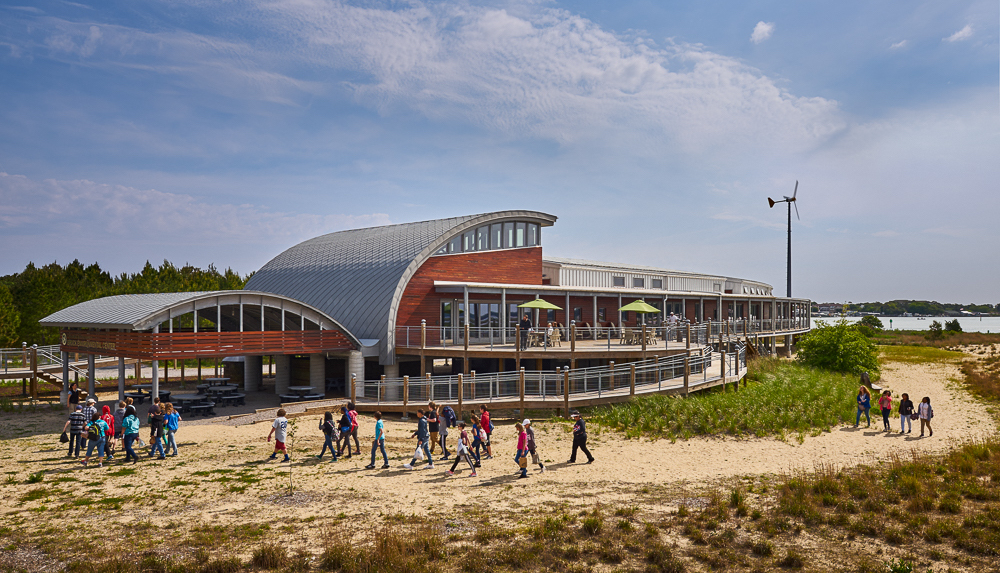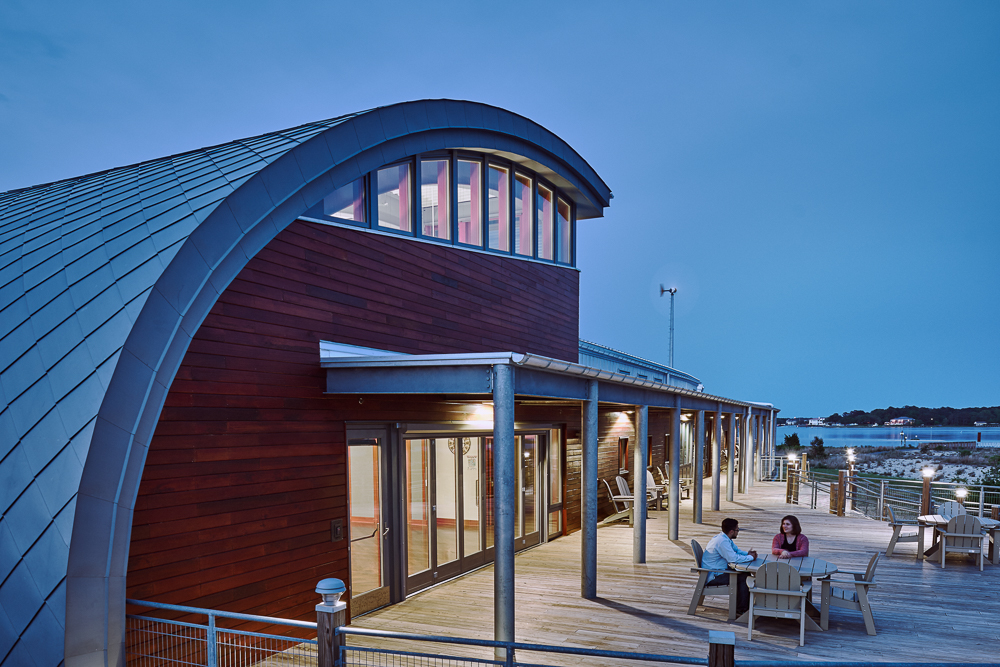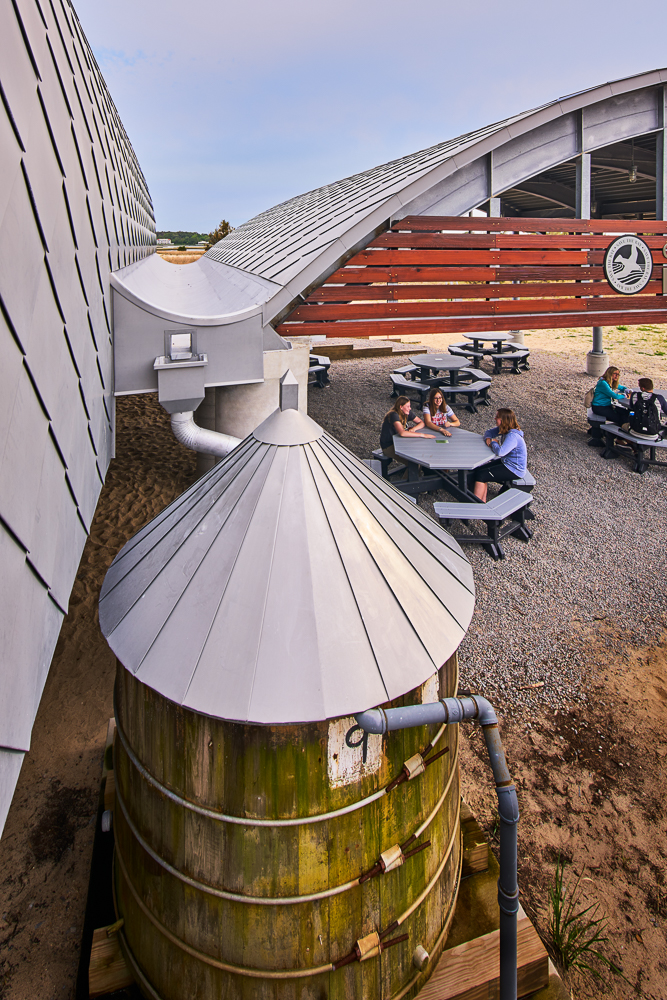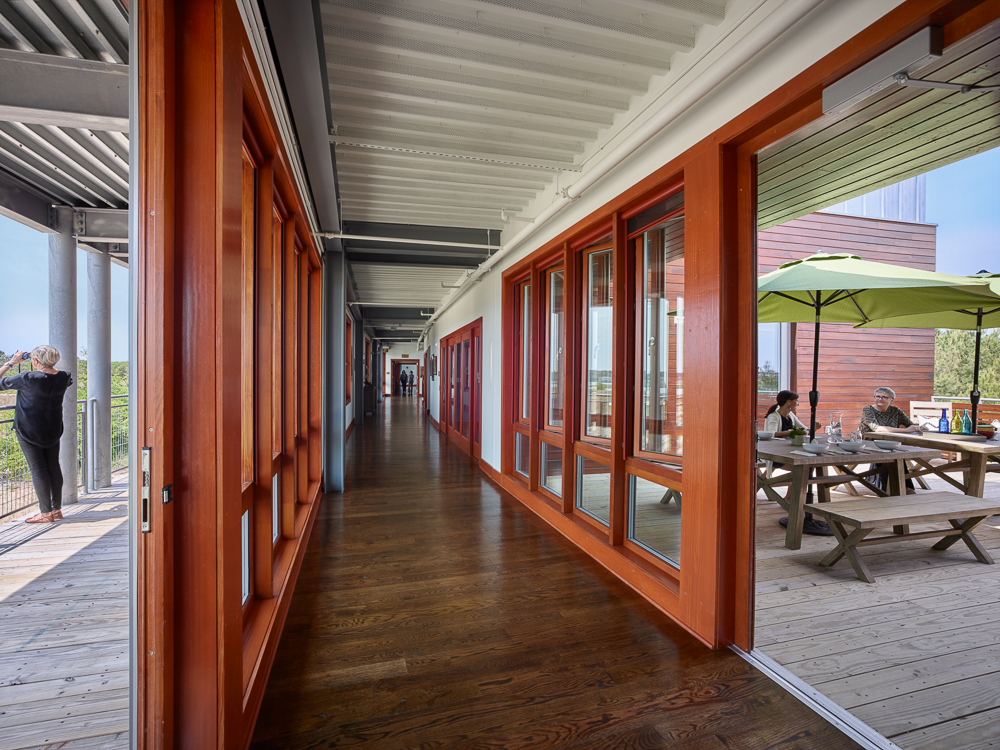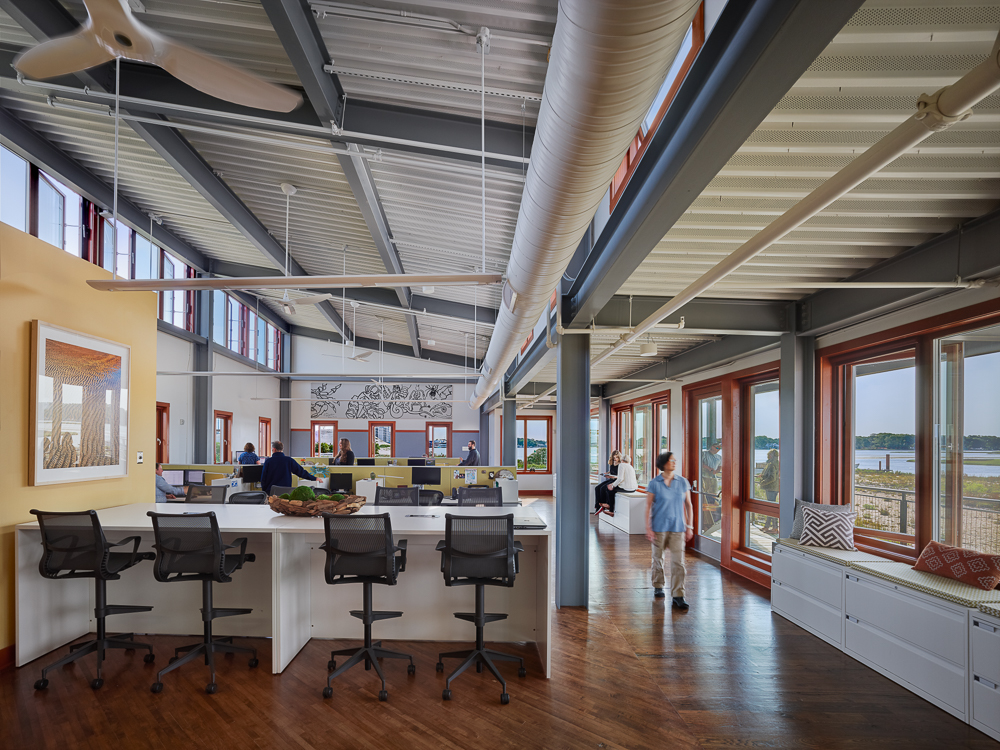This week, the Brock Environmental Center in Virginia Beach, Va., earned Living Building Challenge certification from the International Living Future Institute. The certification means the building produced more energy than it used for 12 consecutive months while meeting other sustainable criteria.
One feature that defines the Chesapeake Bay Foundation’s education building for the is rainwater filtration system that makes the rain drinkable. According to the building’s architect, SmithGroupJJR, the Brock Center is the first commercial building in the continental U.S. to be permitted to treat, to federal standards, harvested rainwater for potable uses. Rainwater is collected from the roof and stored in tanks below an elevated first floor. A filtration system renders the water suitable for drinking and hand washing.
The Brock Center also has waterless, composting toilets, and grey water from sinks and showers is filtered for use in an attached garden of native plants. Water is then naturally cleaned and returned to an underground aquifier.
SmithGroupJJR says the Brock Center generated 83% more energy than it used over the past year. Two 70-foot 10-kilowatt wind turbines and 168 solar panels were used to generate all of the building’s energy.
The 10,500-sf building also has sustainable features like natural daylighting and sunshading, natural ventilation, and geo-thermal heating and cooling.
The Brock Center was completed in November 2014 for $8 million.
(Click photos to enlarge. Photos: Prakash Patel, courtesy SmithGroupJJR.)
Related Stories
| Sep 12, 2011
PVs play new roles as a teaching tool
Solar installations are helping K-12 schools around the country save money and teach students the intricacies of renewable energy sources.
| Sep 12, 2011
Living Buildings: Are AEC Firms up to the Challenge?
Modular Architecture > You’ve done a LEED Gold or two, maybe even a LEED Platinum. But are you and your firm ready to take on the Living Building Challenge? Think twice before you say yes.
| Sep 12, 2011
Putting a stamp on USPS's first green roof
The Morgan Building roof totals 150,000-sf. In addition to a vegetated green roof, other roof areas were upgraded and included 55,000-sf of reflective concrete pavers and ballast, which were also placed over a Sarnafil waterproofing membrane, and 40,000-sf of EnergySmart Roof—a reflective, energy-efficient vinyl roofing system from Sika Sarnafil.
| May 18, 2011
Carnegie Hall vaults into the 21st century with a $200 million renovation
Historic Carnegie Hall in New York City is in the midst of a major $200 million renovation that will bring the building up to contemporary standards, increase educational and backstage space, and target LEED Silver.
| May 16, 2011
Seattle unveils program to boost building efficiency
Seattle launched a new program that will help commercial property owners and managers assess and improve building energy efficiency. Under the program, all commercial and multifamily buildings larger than 10,000 sq. ft. will be measured for their energy performance using the EPA’s ENERGY STAR Portfolio Manager.
| May 10, 2011
Are green goals out of reach for federal buildings?
Many federal agencies are struggling to convert their existing buildings to meet green standards, according to the Office of Management and Budget. Of 20 agencies graded by the OMB on their compliance with green mandates, only seven met the 2010 mandate that requires at least 5% of their buildings meet energy-efficient and sustainable standards.
| Apr 14, 2011
U.S. embassies on a mission to green the world's buildings
The U.S. is putting greater emphasis on greening its worldwide portfolio of embassies. The U.S. State Department-affiliated League of Green Embassies already has 70 U.S. embassies undergoing efforts to reduce their environmental impact, and the organization plans to increase that number to more than 100 by the end of the year.
| Feb 7, 2011
GSA Unveils New Sustainable Workplace Design Tool
The U.S. General Services Administration launched its Sustainable Facilities Tool on Monday, Feb. 7. The innovative online tool will make it easier for both government and private-sector property managers and developers to learn about and evaluate strategies to make workplaces more sustainable, helping to build and create jobs in America’s clean energy economy of the future.


